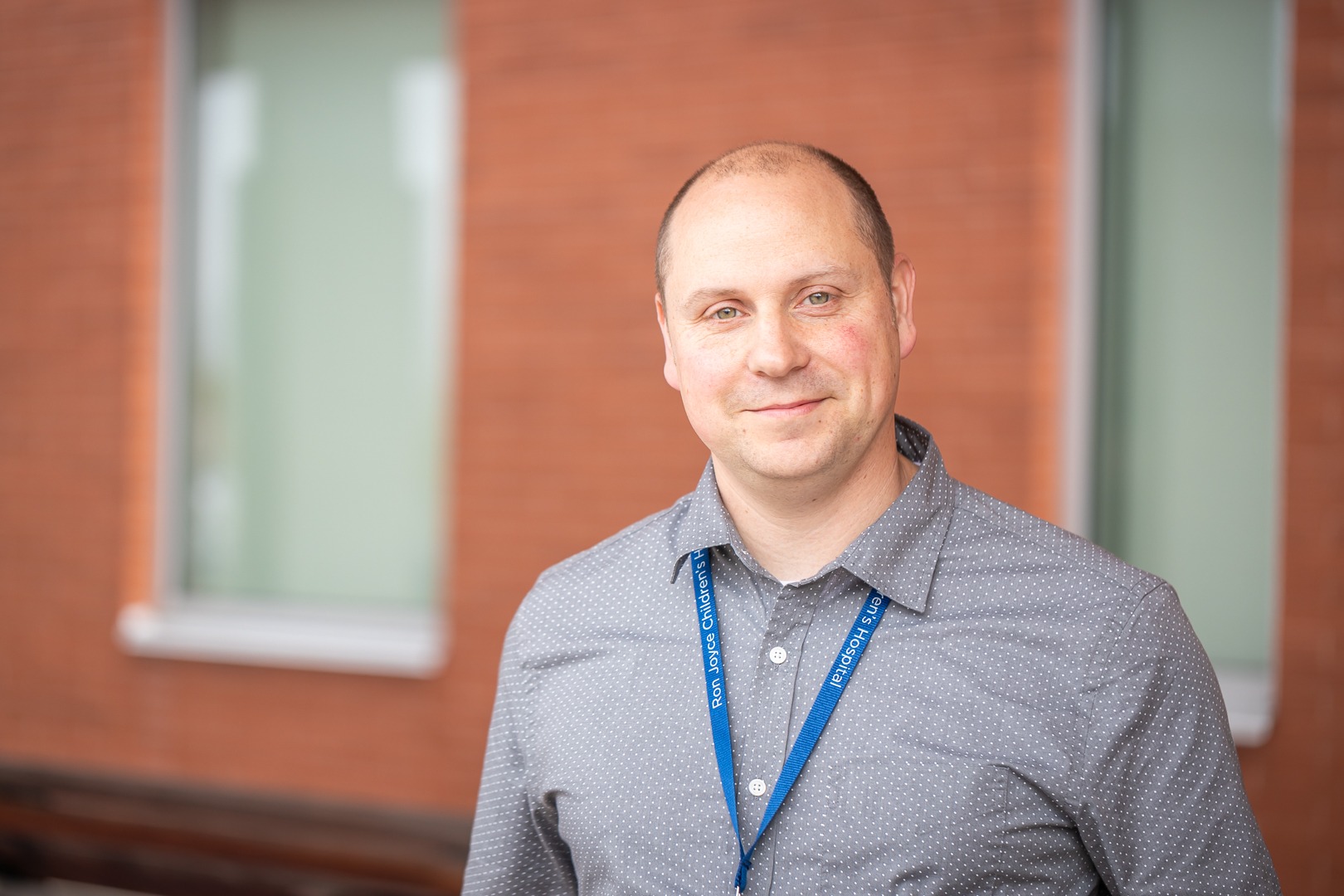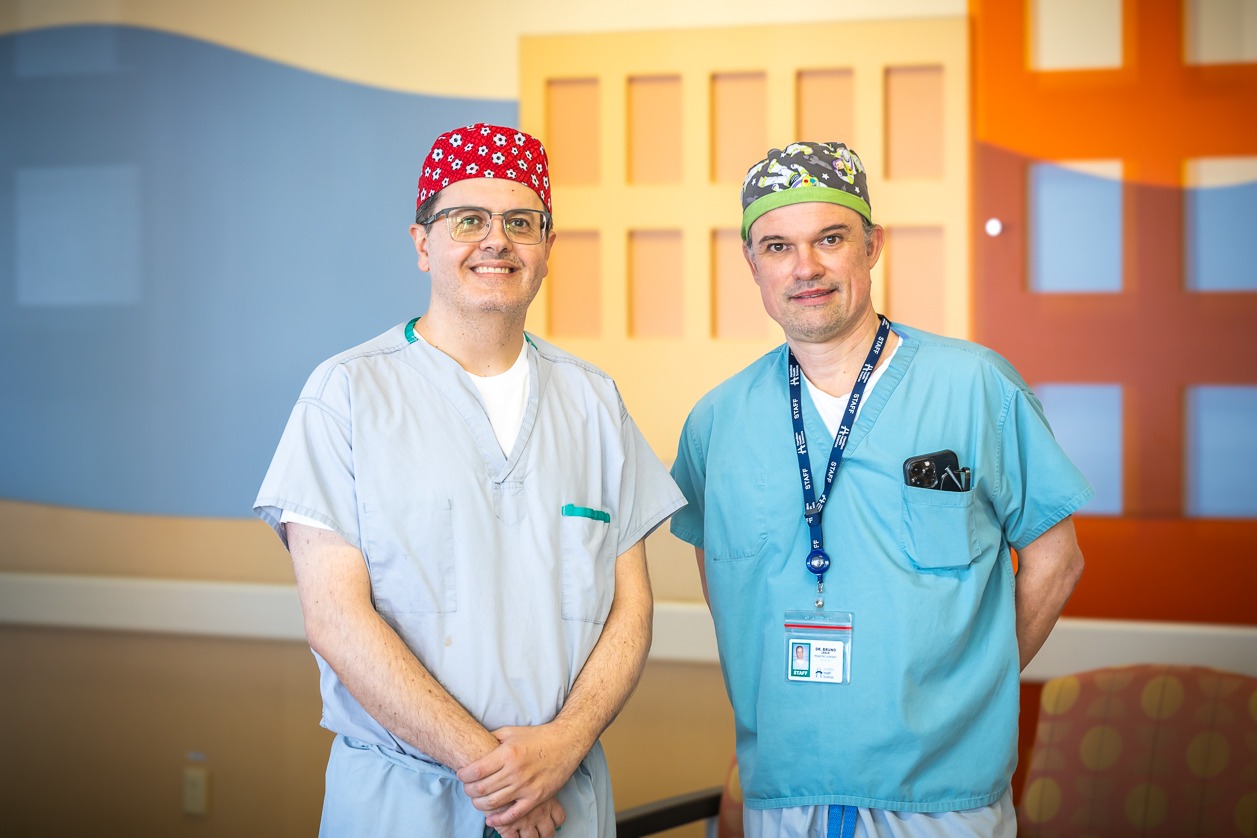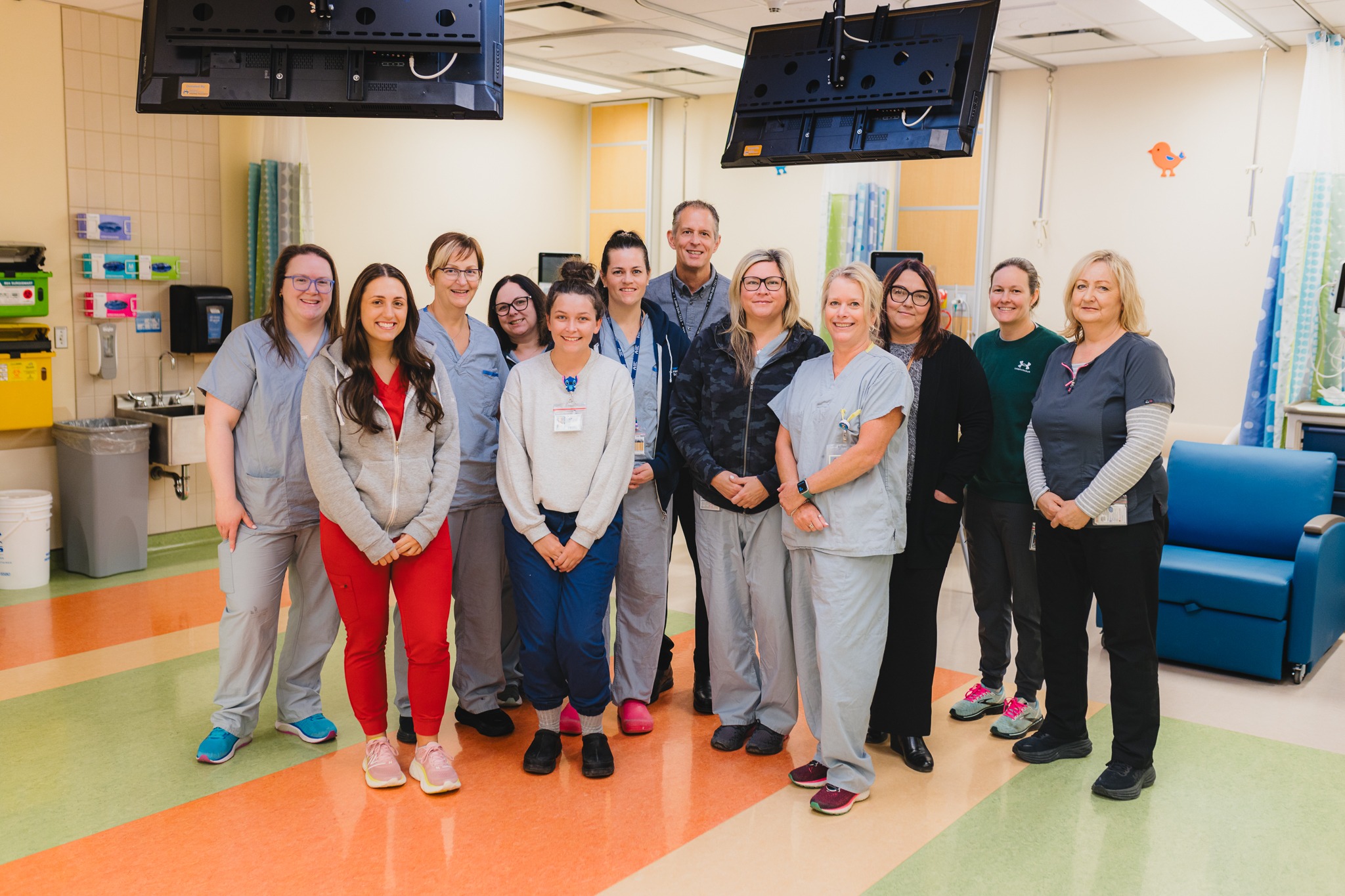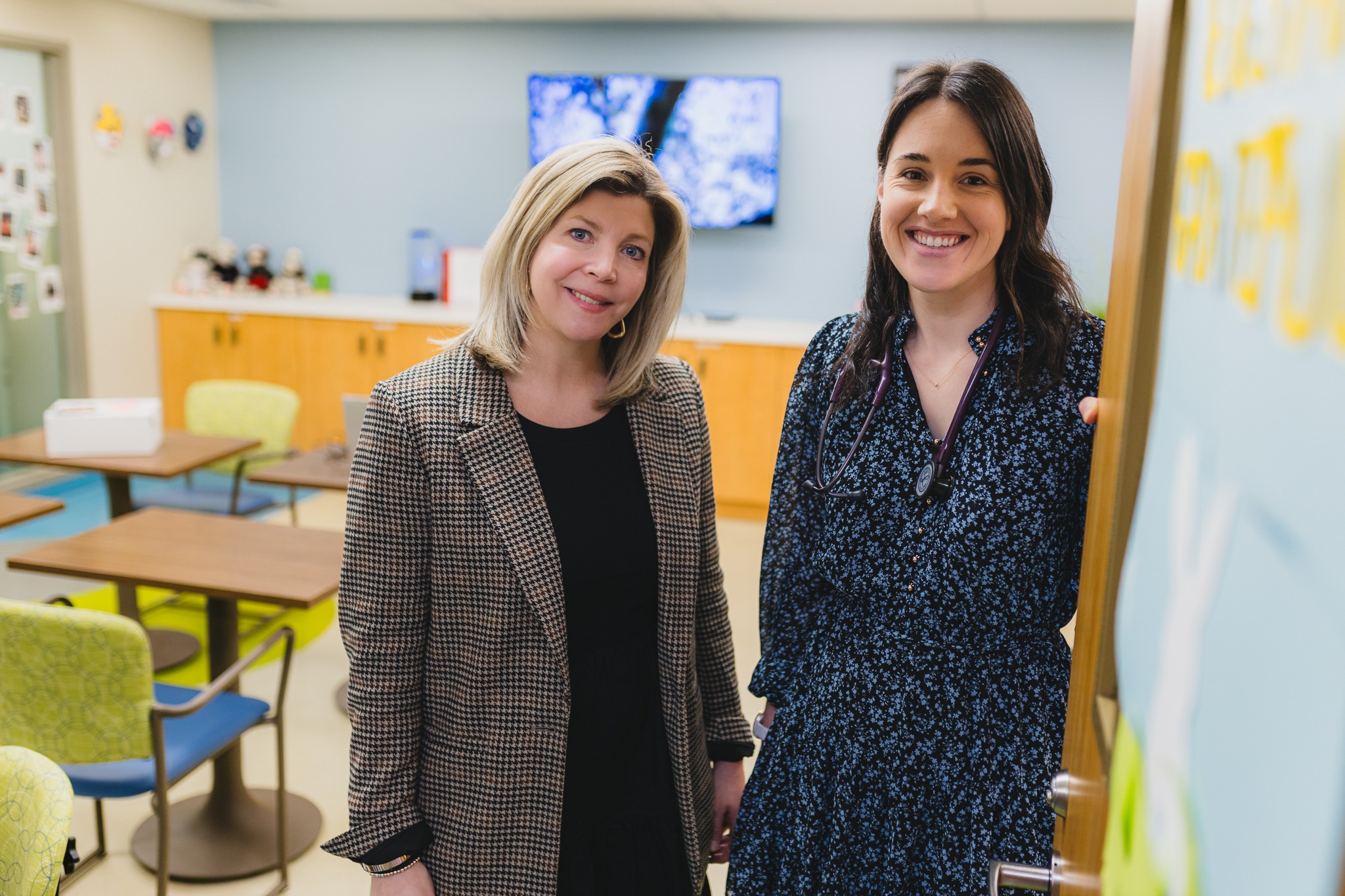
MCH program brings emergency expertise to community hospitals on demand
Imagine your child is rushed to your local emergency department under life-threatening circumstances. Their heartbeat or breathing has stopped, so they need to be resuscitated.
It’s a parent’s worst nightmare. Every second trying to stabilize a child is critical.
For community hospitals outside of Hamilton without a dedicated pediatric team, what comes next may be life changing.
24/7 emergency support
The health-care team at a community hospital tells reception they need an emergency video consultation with an expert from Hamilton Health Sciences’ (HHS) McMaster Children’s Hospital (MCH). An iPad on a stand with a telescoping head is brought to the bedside and can be easily moved around. Moments later, the iPad rings and a video call is started. On one side, the group of health care providers at the community hospital, caring for a patient in need. On the other, an MCH emergency doctor.
“When a child needs resuscitation, it’s all hands on deck.”
This innovative and life-saving partnership is made possible by MCH’s Pediatric Tele-Resuscitation Program. Thanks to a new provincial investment, more community hospitals across Southern Ontario are able to benefit from the support.
#GrowingMCH and making a regional impact
The Pediatric Tele-Resuscitation Program connects the MCH emergency department with community hospitals and smaller health care centres through two-way, hands-free videoconferencing. Together on video chat, MCH experts provide resuscitation support while observing the patient and the emergency department health care providers.
“While no one wants to have to use this program, it’s reassuring to know it’s available.”
The program began in 2018 supporting five Niagara Health hospitals. Since March 2024, it has expanded to provide expertise to the entire region, including HHS’ West Lincoln Memorial Hospital, Milton District Hospital, Oakville Trafalgar Memorial Hospital, Georgetown Hospital, St. Mary’s General Hospital, Grand River Hospital, Cambridge Memorial Hospital, Norfolk General Hospital, and West Haldimand General Hospital.
The new funding has allowed MCH to purchase the required technology for our partner hospitals and hire additional staff to support the program expansion including a physician lead and a project manager.
Connecting regional teams to expert care
West Haldimand General Hospital is a small rural hospital south of Hamilton that sees over 20,000 patients a year in their emergency department, from infants to older adults. They are one of the latest hospitals to be trained on the program.

Dr. William Liang
“Pediatric resuscitation is one of the scariest things a small town emergency doctor has to deal with. You don’t do it very often, and, because it’s a kid, it’s always more emotionally testing. Having an expert to guide us along the way is very helpful,” says chief of the West Haldimand General Hospital emergency department, Dr. William Liang. “For the family, it’s quite reassuring to have something like this, and makes them feel more at ease knowing the doctors are doing their best with guidance from an expert.”
An always-on resource for hospitals in need
There is a dedicated MCH emergency doctor who is responsible for answering phone consultations and supporting tele-resuscitation calls on each shift, in addition to caring for patients in the emergency department.
Typically, a charge nurse or trauma nurse will join the call, along with other team members as needed. A pharmacist may also join to assist with medication advice for children, since doses are very different from adults. It’s also common for another doctor to join if their patient load allows.
Within minutes, the team gathers in a doctor’s office. On a large screen, they have eyes on the patient, the vital monitor, and the health care providers at work. Together, they walk through the steps required to stabilize the patient so they can receive additional treatment, or be transferred to a larger pediatric hospital such as MCH.
Improved patient outcomes
A patient might need resuscitation for a variety of reasons, such as severe infection, allergic reaction or shock, if they’ve stopped breathing or are having trouble breathing, severe burns, drowning, or other traumas such as a car crash.

Valerie Jansen
Valerie Jansen, clinical leader of the MCH emergency department, remembers one of the early calls for a two-month-old experiencing seizures.
The team at a community hospital called for MCH support as the patient was no longer breathing and still actively seizing. The MCH team was able to provide expert suggestions based on what they were seeing, for example, changing the size of the equipment, size of the breathing tube and changing the patient’s position. With these adjustments, they were able to successfully intubate (insert a tube through their airway to help them breathe) on the first attempt, stabilize the baby, and transfer them to MCH for further care.
“The goal of the program is to improve timely access to expert care so patients can be cared for at their home hospital, especially when they are too sick to go by ambulance or air ambulance to get to us,” says Jansen. “It may reduce the need for transfers, or if they need to be transferred to another hospital, it is safer, and they are more stable when they arrive.”
Reassurance for the care team
Corrine Mitges is a registered nurse in Halton Healthcare’s emergency department in Oakville, a hospital recently onboarded to the program. Mitges is already familiar with how the program works – she participated in calls as part of the Niagara Health team in a previous role.
The technology has changed since she first used it years ago.
“The new set-up is much easier. It’s smaller, doesn’t take up much room, doesn’t need to be plugged in, and is easier to bring in view of the patient,” she says, “It can be moved to any room, since we know emergencies can happen anywhere.”
Sometimes, the outcome of a resuscitation isn’t what the team hoped for. She recalls one of her earliest experiences with the program involving a child without vital signs.
“The MCH team reaffirmed what we had done was correct, and that there was nothing more we could do. With the family present, it gave them an understanding that we were all trying our best, and we were able to stop our efforts knowing we did everything we could,” she says. “As a professional and as a person, you don’t want to question if there was anything else you could have tried, so it was good to have that reassurance.”
“You don’t want a poor outcome in any situation, but you definitely don’t want a poor outcome with a child.”
Mitges says there is an extra level of stress when a child is sick, so being able to draw on experts in the field, in real time, is amazing.
The team might provide suggestions, or they might provide reassurance that you’re doing the right thing.
“You don’t want a poor outcome in any situation, but you definitely don’t want a poor outcome with a child,” she says. “While no one wants to have to use this program, it’s reassuring to know it’s available.”
Building capacity through program expansion
Jansen and her colleagues are looking forward to rolling out the program to over 40 centres in Ontario Health West over the next year.
“People are very excited about the program. These community hospitals have highly skilled teams who are used to dealing with emergencies, but may not be as comfortable treating children. This program is just empowering them to provide high quality emergency care for pediatric patients.”
The program has been a welcome collaboration across hospitals, with the team at West Haldimand General Hospital grateful for the partnership.

AnneMarie VanSickle
“McMaster Children’s Hospital, along with the rest of Hamilton Health Sciences, has always provided a great partnership with us and reach out frequently to see how they can help to improve patient care,” says AnneMarie VanSickle, clinical director of the West Haldimand emergency department.
“When a child needs resuscitation, it’s all hands on deck. As we go through providing that care, which is not something that we do every day, being able to just-in-time and virtually contact our partners at McMaster Children’s Hospital, specifically in the emergency department, and have them part of the team, even though it’s virtual, I cannot stress enough how important that is.”








